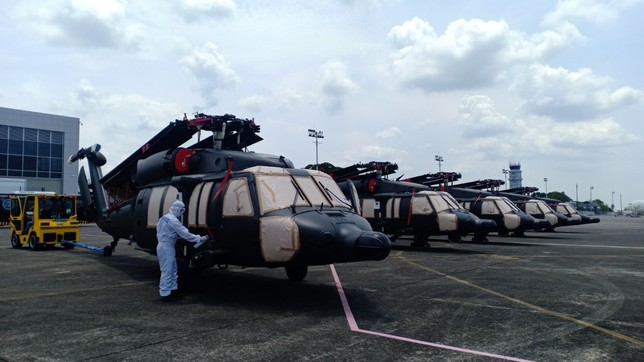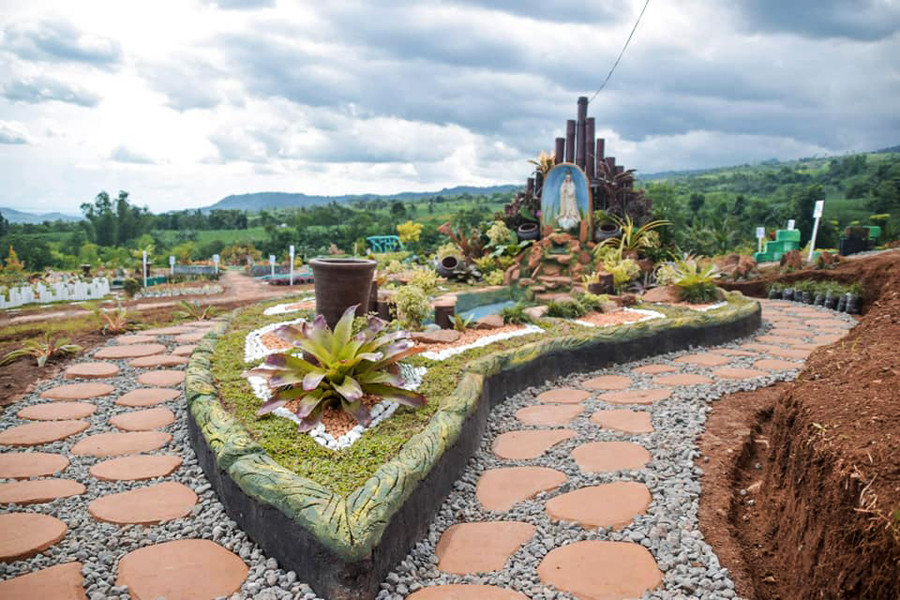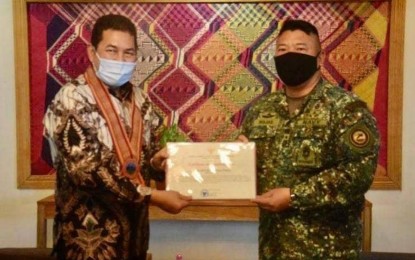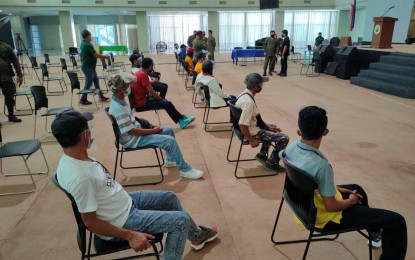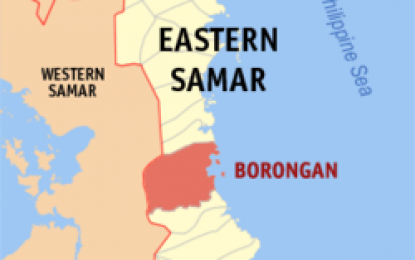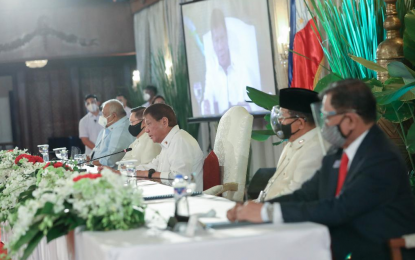Propaganda statement posted to the Communist Party of the Philippines (CPP) Website (Jun 28, 2021): On the Communist Party of China
 This interview was the main feature of the webinar which was held by the Paaralang Jose Maria Sison on April 25, 2021 in anticipation of the 100th anniversary of the founding of the Communist Party of China on the official date of July 1, 1921
This interview was the main feature of the webinar which was held by the Paaralang Jose Maria Sison on April 25, 2021 in anticipation of the 100th anniversary of the founding of the Communist Party of China on the official date of July 1, 19211-4. before victory, 5-7. period of socialism 8-10. period of revisionism and imperialism
Questions:1. What was the social and international situation that led to the establishment of the CPC? What is the similarity or difference in building their Party (and Army) with the Russians?JMS: Through the Revolution of 1911 in China, the Qing dynasty was overthrown and the bourgeois Republic of China was established in 1912 under the leadership of Sun Yatsen. But it was betrayed by Yuan Shikai who declared himself emperor of China. China was in turmoil. Warlords dominated the provinces and the imperialist powers soon took advantage of the situation in China.
The October Revolution took place in Russia in 1917 and in the following years the Chinese who hoped to break free from the dark condition of China enveloped by feudalism, comprador capitalism and the domination of imperialist powers took an interest in this revolution. So did Lenin and the Bolsheviks immediately take an interest in China. From the establishment of the Comintern in March 1919, they aimed to extend the proletarian revolution to China.
In May 1919, the May 4 Movement also erupted among the Chinese youth to oppose the decision at Versailles by the winning powers in World War I to grant to Japan the German concessions in China. By July 23, 1921, there were already advanced elements in China from the petty bourgeois intelligentsia who wished to become communists and build the Communist Party of China (CPC). Twelve Chinese, representing about 57 members, gathered in Shanghai to form the CPC.
In the formation of the Social Democratic Labor Party in Russia in 1893 by those who would become the Bolsheviks led by Lenin and the Mensheviks led by Martov, most of the founders also came from petty -bourgeois intelligentsia but immediately recruited workers in accordance with the proletarian character of the Party.
The Bolsheviks deliberately recruited cadres within the Tsarist army and formed the soviets (councils) of soldiers to turn the imperialist war into a civil war against Tsarism. At the same time, the Bolsheviks formed the soviets of workers and peasants and the Red Guards who became the spearhead in the seizure of political power in Petrograd. The October Revolution of 1917 was well prepared.
When the National Revolutionary Army was formed with the help of the Soviet Union under the First United Front of Guomindang (GMD) and the CPC in the years of 1924 to 1927, regiments were formed under the leadership or influence of CPC cadres and members. When Jiang Kaishek betrayed in 1927, these regiments moved to the side of the CPC and eventually reached Jingkangshan where Mao had earlier built guerrilla bases among the peasantry.
2. Can you describe how the CPC promoted the United Front on various issues (Land issues, CPT-KMT relations, Peace Talks, National Minority issues, middle forces issues, etc.), Location (Urban- Countryside) and Period (various stages of the civil war, the war against Japan and the establishment of the new republic)JMS: The GMD and CPC formed the First United Front against the northern warlords and they launched the Northern Expedition in 1926-27. During this time, Mao worked among the peasantry to carry out agrarian revolution, guerrilla warfare by the Army and carry out the antifeudal united front in Jingkangshan. Mao led the Autumn Harvest Uprising of 1927.
He built in Jiangxi the Soviet of Workers and Peasants and the Red Army that the GMD attempted to destroy through campaigns of encirclement. The CPC defeated the first three of these campaigns and the CPC grew stronger. But the revolutionary bases were damaged in the subsequent campaigns of the GMD by the interference and wrong line of the Comintern representatives.
And the CPC was forced to make the Long March to Yenan in 1935. It was at the Xunyi Conference that the leadership of Mao was recognized and upheld. Soon after the Red Army reached Yenan, the GMD and the CPC had a Second United Front Against Japan from 1936 to 1945. In enlarging and strengthening the Red Army, the CPC carried out the strategic line of encircling the cities from the countryside. The process of people’s war went through three strategic levels of defense, stalemate, and offense.
The independence and rights of national minorities were respected. Thus, they were motivated to take part in the people’s war. When the Japanese were defeated and surrendered and World War II ended, the CPC agreed to engage in peace negotiations with the GMD in Chonqqing in 1945. But what Jiang Kaishek wanted was civil war. The GMD was defeated in the civil war from 1946 to 1949. Thus, the People’s Republic of China (PRC) was established on October 1, 1949.
3. What did the people’s government, economic operation, cultural work and international work look like when they were not yet the state in power?JMS: At the time before the People’s Republic of China was established in 1949, there was a system of people’s government in the revolutionary base areas. Very much like in the Philippines today in the guerrilla fronts, there were organs of political power under the leadership of the CPC at all levels.
These were founded on the basic alliance of the working class and the peasantry and constituted the People’s Government of Workers and Peasants which directed and administered the economy, social programs, cultural affiars and international relations..
4. Arousing, organizing and mobilizing the peasantry is vivid in the history of the CPC. On the other hand, can you share the high points in arousing, organizing and mobilizing the youth and workers in the cities and in the countryside (such as Yenan etc.). How did it overcome the White terror of the cities, Japanese aggression and prepare the people of the city for victory?JMS: From the May 4 Movement in 1919 onwards, the young activists who became communists in 1921 continued to arouse, organize and mobilize the youth. They began to integrate themselves with the workers and the trade unions before the founding of the CPC. They acted more widely and intensely among the workers after the CPC was formed.
Mao was the most zealous in organizing the peasants because the majority of the Chinese were landless peasants and therefore agrarian revolution was the main content of the democratic revolution. The Chinese revolution can be advanced and won with the integration of armed struggle, agrarian revolution and the building of revolutionary base areas in the countryside.
Due to the organizing and strengthening of the revolutionary movement among the peasants in the countryside, the CPC and the people’s army were able to overcome the White terror in the cities, the Japanese aggression and the GMD attacks. The CPC cadres and members who could no longer operate in the cities could shift to the countryside for further revolutionary work.
The participation of the peasants was favorable to the revolution and the countryside served as the widest area of maneuver in the people’s war. In the countryside, the small and weak people’s army could grow and become stronger through the strategy and tactics of guerrilla warfare and regular mobile warfare.
5. During Chinese Socialism, what was the situation of the following: big landlords/bourgeois compradors officers and staff of the old KMT government, military officers and ordinary soldiers of the KMT, peasants, industrial workers, intellectuals, national bourgeoisie, youth, women, national minorities etc. During Mao’s time, how did they ensure the delivery of basic needs to the people (food, clothing, housing and education) and increase the quality of life (job security and wage issues, child and old care, health, rest & recreation, etc.)JMS: In the early years of the People’s Republic of China (PRC), the nationalization of land was proclaimed and land reform (confiscation of land from landlords and the free distribution of land to landless farmers or do not have enough land) was completed. Cooperativization and mechanization of agriculture was carried out in stages. Landlords who had no serious crimes against the people were given the opportunity to live decently but were deprived of the right to vote and be elected to any position in government.
The big bourgeois compradors closest to the enemy were deprived of property, tried for corruption and were also deprived of the right to vote and be elected to any position in government. Those who provided assistance and cooperated with the revolutionary movement were given the opportunity to become the national bourgeoisie in accordance with the policies of the socialist state and were allowed to bring their capital into joint state-private corporations. This was a transitional measure.
Government officials of the GMD who were corrupt, brutal and rabid agents of the class enemy were arrested, tried and punished. But the masses of subordinate officials and employees continued their work and came under the direction of CPC cadres and were given study courses on socialism. Even before the victory of the revolution, many officials and employees had already sided with the revolution.
Officers and ordinary soldiers of the GMD army who surrendered were granted amnesty and were even integrated as officers and soldiers in the people’s army under the supervision of Party cadres and commanders of the people’s army. There was also the option of GMD officers or soldiers being allowed to go home if they did not want to join the people’s army. Officers and soldiers, especially the murderers and intelligence operatives who were caught by the people’s army were tried according to due process and given appropriate punishment on the basis of evidence.
Peasants benefited from land reform and cooperativization, industrial workers from the expansion of production and increase of wages and social services, intellectuals from their freedom and better situation to serve the people, the national bourgeoisie from the opportunity to help socialist industrialization, the youth from opportunities to help build socialism, women from liberating themselves from patriarchalism and discrimination, and national minorities from the respect for their self-determination and further opportunities for all-round development.
In Mao’s time the delivery of basic needs to the people (food, clothing, housing, health care and education) and raising the quality of life (job security and higher wages; child and old people’s care, health, rest and entertainment, etc.) were ensured, with the disappearance of foreign monopoly corporations and big bourgeois compradors taking out superprofits from the country, landlords collecting land rent for their luxurious living, and with the elimination of corruption and punishment of corrupt officials.
6. How did Socialist China deal with the various complex issues in running the new state: Solving the disease brought by the old society (opium addiction, prostitution, begging, prisoners due to common crimes, bureaucratic corruption , epidemics), economic and political sabotage by the KMT, harassment both by the US and the revisionist Soviet Union, natural calamities, environmental protection, border disputes with neighboring countries and dealing with international affairs (party to party, people to people and diplomatic relations) in forming the front against Imperialism (national liberation movements and decolonization of Africa).JMS: Socialist China solved the problem of opium addiction and prostitution by dismantling criminal syndicates and punishing its ring leaders, providing social services, employment and assistance to communities. Regarding begging, those who could afford to work were provided with employment, assistance and treatment for the sick. As for prisoners who committed common crimes, they were given the opportunity to change and work in prison, except for those who were liable for the most serious crimes and death penalty.
Bureaucratic corruption and the economic and political sabotage of the GMD were severely punished. Epidemics were suppressed through the cooperation of health care personnel and communities. The Party mobilized the masses to resist pressures from both the US and the revisionist Soviet Union, address natural disasters, carry out environmental protection, guard borders and resolve disputes with neighboring countries.
Socialist China carried out international work to promote and develop party-to-party, people-to-people and diplomatic relations. It upheld the principles of proletarian internationalism and solidarity of the peoples of the world against imperialism and reaction. It worked for the unity of the peoples of Asia, Africa and Latin America to fight and win their struggles for national and social liberation. It pursued the line of peaceful and friendly diplomatic relations based on mutual respect for independence, cooperation and mutual benefit.
7. It is often ridiculed in the bourgeois media and academe that during the ‘Great Leap Forward’ many died, famine spread and that the GPCR was a great tragedy. On the contrary, what can we say about significant achievements and breakthroughs in various fields during those times?JMS: The ridicule of the bourgeois and anti-communist media and academics that millions died of starvation due to the Great Leap Forward is untrue and absurd. Through the Great Leap Forward, China’s industrial foundation was expanded and strengthened, the commune system was built as the highest level of agricultural cooperation and China’s production and economy grew. The imperialist blockade, the betrayal of the Soviet Union and natural disasters were overcome. China became a strong socialist country because of the Great Leap Forward.
The Great Proletarian Cultural Revolution was carried out to combat modern revisionism, prevent the restoration of capitalism and consolidate socialism by revolutionizing politics and culture in the superstructure and thereby enhancing the development of the socialist forces of production. The revolutionary leadership of the proletariat and the mass line were underscored and applied in the formation of three-in-one revolutionary committees, in the trade unions and other mass formations and in the creation of new cultural and artistic works.
8. Like Marx’s summary of the Paris Commune and Mao’s summary of the Soviet Economy, what is your summary of socialist construction and GPCR in China? What can be done to hold on to the positive lessons and so too with the negative lessons so that in the future these would not be repeated in the countries that will succeed in building Socialism again?JMS: We must understand that the proletarian and socialist line taken by China in the period of rehabilitation and reconstruction, basic socialization of the economy, Great Leap Forward, socialist education movement and Great Proletarian Cultural Revolution (GPCR) is correct. During these stages, the correct policies and implementation of socialist revolution and construction emerged and the revisionist traitors who restored capitalism in China also became exposed.
The GPCR was necessary for vigorous struggle against modern revisionism because of the influence of the Soviet Union and because of the internal bourgeois elements and tendencies in China. The GPCR exposed the exponents of revisionism and the path of capitalist restoration.
The GPCR was clearly successful in the years of 1966 to 1971. The correct line was set forth against the revisionists in power like Liu Shaoqi and Deng Xiaoping who were overthrown by the Red Guards of the youth. As a result of the Shanghai Commune, the three-in-one system of revolutionary committees was established as the organ of political power. The Anshan Constitution was made a model to guide the working class and the labor movement.
After the Left was split on the accusation against Lin Biao wanting to be president of China and plotting to assassinate Mao and when Lin Piao and his entire staff were killed or assassinated, Deng Xiaoping was returned to senior positions, as PLA chief of staff and higher positions. In 1972, US President Nixon visited China. In the years 1972 to 1976 revisionists and anti-socialists used the aggressive policy of the Soviet Union as the pretext to link China to the US in the name of modernization, pro-capitalist reforms and opening up and integration with the US and the global capitalist system.
As with the defeat of the Paris Commune, it has been proven that the international bourgeoisie can conspire to defeat the proletarian revolutionaries. Deng Xiaoping’s successful capitalist counterrevolution proved the fact that there were revisionist traitors within the CPC and the Chinese state and had to be confronted by the GPCR under Mao’s theory and practice of continuing revolution under the class dictatorship of the proletariat through cultural revolution to fight revisionism, prevent the restoration of capitalism and consolidate socialism.
9. How was the process of revisionist betrayal of the principle of Socialism, capitalist restoration until China turned to Imperialism? Can we stage it from Deng Xiaoping, Jiang Zemin, Hu Jintao and Xi Jinping?JMS: Due to the collusion of the Right opportunists and Centrists, Deng Xiaoping and his accomplices succeeded in carrying out their counterrevolutionary coup in 1976 . The former opponents of the Great Leap Forward united against the Left and the GPCR.
Cadres loyal to the GPCR were arrested and imprisoned, all those deemed pro-GPCR were removed from the Party, the GPCR was declared a complete catastrophe, the commune system was dismantled, many rural and urban industries were privatized, state banks were opened to China’s former big comprador capitalists, war bonds already paid back before were again paid, laws were enacted to allow entry of US and other imperialist investments and the US and China conspired to exploit cheap Chinese labor.
Since late 1976, especially since the Third Plenum of the Eleventh CPC Central Committee in 1978, Deng Xiaoping and his accomplices have carried out the rapid and full restoration of capitalism in China. Liu Shaoqi was rehabilitated in 1980. The big bourgeoisie thrived within the state and private sectors. And the billionaires gained control over the Party, the state and the economy. China and the US have become the partners in the implementation of neoliberal globalization since the 1980s.
10. What can we say is the distinctive character of Chinese Imperialism that is different from the traditional Imperialist countries in the West? What are the big Chinese companies (State-Private) today in terms of Industry, Commerce, Banking and Investment? (Digitized payments [from QR codes to facial recognition], e-commerce and new ventures in digital currency are prevalent in China. What role will these new innovations play in the ongoing capitalist accumulation and crisis of capitalism?)JMS: The distinctive character of Chinese imperialism that is different from the traditional imperialist countries in the West is that China has used its large population, the industrial foundation of the former socialist economy, the combination of state and private monopoly capitalism, state planning and the use of state resources and the rapid transfer and development of high technology to accelerate the growth of the economy and military forces. State and private monopoly corporations in industry, commerce, finance and investment work together and coordinate.
There are state monopoly corporations in all major parts of China’s economy. State monopoly corporations have always been associated with private monopoly corporations and even sell shares to big capitalists. Take a look at the list of the 500 largest Chinese private corporations. Let me just mention the 10 with the largest capital: Huawei (in electronics), Pacific Construction Group, Amer International Group (metals), Hengli Group (chemicals), Country Garden Holdings (real estate), Evergrande Group (real estate), Legend Holdings Ltd (electronics), Gome Holdings Group (retail), China Vanke Co Ltd (real estate) and Geely Holding Group (motoring). Huawei’s largest capital is 858 billion yuan or USD 126 billion and Geely’s is 330 billion yuan.
The 10 largest private banks of China are: China Merchants Bank, Industrial and Commercial Bank of China, Bank of China, Agricultural Bank of China, China Construction Bank, China International Capital Corporation, Bank of Communications, Shanghai Pudong Development Bank, China CITIC Bank and China Minsheng Bank. The following are the 5 largest private insurance companies: China Life Insurance Company, Ping An Insurance Group, China Pacific Insurance Group, People’s Insurance Company of China and New China Life Insurance.
11. Online sources say that the concept of the 9 dash line dates back to Mao’s time (or even earlier in the Kuomintang era) but it did not lead to aggressive claims to the WPS. What is the basis and your view on this? Now that the Chinese Imperialist presence in the WPS is growing stronger, what should the Filipino people and the world do in this regard?JMS: The GMD government first made a 9 dash line and claimed 90 percent of South China in 1947. There was no such claim in Mao’s time. It was only in 2009 that the People’s Republic of China began using the 9-dash line to claim the South China Sea in connection with its dispute with Vietnam over the Island of Paracels.
And then China launched aggression against the Philippines by seizing maritime features in the exclusive economic zone to the territorial sea in the West Philippine Sea to create artificial islands that also have the characteristics of military bases. It also destroyed the marine environment and claimed the marine and mineral resources around it.
China violates the sovereignty and maritime rights of the Philippines in its exclusive economic zone and extended continental shelf in the West Philippine Sea, which are guaranteed by the UN Convention on the Law of the Sea and upheld by the 2016 judgment of the Permanent Arbitration Court that favors the Philippines and against China’s baseless claims.
The Philippines and the Filipino people must defend their sovereign and maritime rights and compel China before the UN and various courts to vacate the occupied maritime features and pay rent for the occupation and compensation for damages and destruction of the marine environment. The Filipino people must enlist the solidarity and support of the peoples of the world on this issue.
12. What is the prospect of socialist renewal in China at present? It has been reported in the past that there are students at Peking University who are trying to take Marxism seriously, re-examine Mao and even join factory workers to study and live among them. Is there also a possibility of ‘balkanization’ as happened in the former Soviet Union amid issues in Xinjiang and Hong Kong?JMS: The big bourgeoisie came back to power in China through a period of “peaceful evolution” involving the propagation of modern revisionism, undermining the socialist system and countering the GPCR. But ultimately force was used by the capitalist restorationists to overthrow the proletariat. Deng made a counterrevolutionary coup, arrested and imprisoned those who stood for the GPCR and the proletarian-socialist line of Mao and killed some of them.
Those Maoist groups that you refer are being persecuted and being suppressed. They have to fight Chinese monopoly capitalism, which masquerades as “socialism with Chinese characteristics”. They have to struggle with the same revolutionary determination and vigor like the CPC led by Mao which fought and defeated the GMD. There can be no “socialist renewal” without hard and bitter forms of struggle, including armed struggle that may be supported by those elements in the current Chinese state and army who still secretly side with the people and adhere to the socialist cause.
China has been able to grow its large economy and develop a high level of technology in partnership with the US and other imperialist powers at the expense of the toiling masses of workers and peasants and the high cost of favoring the Chinese bourgeoisie and the foreign imperialist firms and incurring huge amounts of public debt. There is widespread social discontent in China despite official claims of rising prosperity and eliminating mass poverty.
China thinks that it can further develop its economy within its own borders as well expand the export of surplus commodities and capital through its One Belt-One Road project. But the US (together with nearly all the other traditional imperialist powers in G-7) regards China as No.1 economic competitor and No. 1 political rival and is increasingly determined to throw obstacles on the path of China.
The US has declared a trade war against China. It is trying to cut down the export surplus income that China has been getting for decades from the US market and is shifting manufacturing operations from China to lower-wage countries like India, Bangladesh, Vietnam and Thailand. It is accusing China of manipulating its trade and currency policies and stealing technology from US research laboratories and operating companies.
The US is also supporting and emboldening public resistance to China in Taiwan, Xinjiang, Tibet and Hongkong. I think that these areas, including the Daoyu islands usurped by Japan, are under China’s national sovereignty and I do not yet foresee how China can be Balkanized. At any rate, border disputes between China and India have erupted. And China itself is provoking the resistance of Southeast Asian countries because of its baseless claim over 90 percent of the South China Sea in violation of the UNCLOS.
It remains to be seen how much China is adversely affected by the worsening crisis of the world capitalist system and by China’s intensifying contradictions with the US. China may become stronger or weaker as an imperialist power or they may both weaken due to the worsening crisis of overproduction of the capitalist system and due to mutual decline. It is more likely that China would soon become a more powerful imperialist power than the US and that the US would continue to decline and be riven by strong fascist and anti-fascist currents.
China might eventually throw away its red flag of hypocrisy and convenience and follow the example of Gorbachov throwing away the communist flag. China could be severely weakened by the global capitalist crisis and by the attempts of the US to undermine and sabotage the Chinese economy, the OBOR project and BRICS. The Chinese big bourgeoisie might adopt even more repressive measures against the Maoist groups and movement as social discontent and resistance by the Chinese people become more manifest.
The most desirable prospect is for the Maoists and the proletariat to bounce back and seize power again from the bourgeoisie and reestablish socialism. As far as I know, there are Maoist groups in China and their movement is growing in strength. And the state is trying to suppress them.The Maoists can grow stronger as the crisis of the world capitalist system worsens and the revolutionary mass struggles for national liberation, democracy and socialism surge foward on a global scale.
13. You once mentioned in your contribution to an international seminar, the CPC’s contribution to the establishment of the first CPP, the Wa Chi guerrillas and the re -establishment of the Party. Can you reveal some of its historical details? (A Filipino-Chinese named Sixto Mercado Tiongco Yap [Ye Fei] became the General of the New 4th army from Tiaong, Quezon)
JMS: Since the CPC was established in China in 1921, it had a branch in the Philippines among Chinese workers and they also had trade unions. The long -term principal cadre of the Philippine branch of the CPC is Comrade C. He was close to Crisanto Evangelista, the founder of the Communist Party of the Philippine Islands.
Comrade C. also became the principal cadre in forming the Wa Chi squadron of the Chinese which became part of the Hukbalahap in 1941. They fought well against the Japanese invaders. Many of them left the Philippines in 1947 and 1948 to participate in the general offensive and the victory of the CPC and the PLA in China. It is an honor and good fortune for me to have personally met and talked to Comrade C. several times in Beijing in 1966. He was then in a high position at the CPC Higher Party School.











